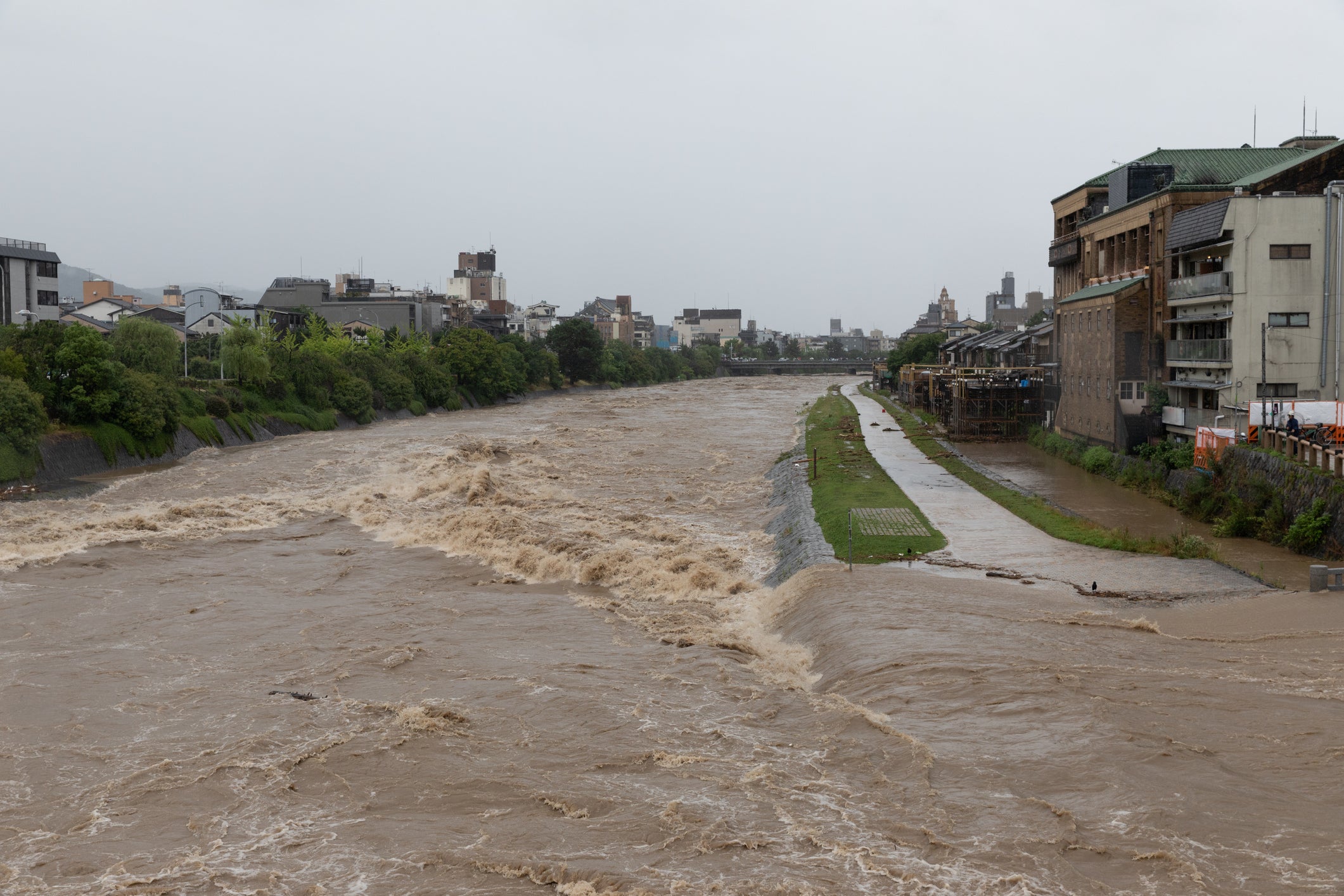Important measures to ensure the reliability and accuracy of disaster prevention information
table of contents
Introduction
1. Selection and confirmation of information sources
2.Transmission of accurate information
3.Supervision and cooperation of experts
4. Use appropriate expressions
5.Updating and correcting published information
6. Providing appropriate information for each region
7.Ensuring transparency and accessibility of information
summary
Introduction
Ensuring the reliability and accuracy of disaster prevention information is an extremely important issue in protecting people's lives and property. In disasters and emergencies, the provision of the right information at the right time enables a quick and effective response and plays a role in minimizing confusion and anxiety. In this article, we will explore in detail the important measures to ensure the reliability and accuracy of disaster prevention information.
1. Selection and confirmation of information sources
1-1 Communicating accurate information
・Prioritize official announcements to prevent excessive dissemination or alteration of information.
Avoid confusion by providing consistent information through appropriate channels.
1-2 Supervision and cooperation of experts
- Disaster prevention information requires scientific knowledge, so it is important to receive supervision from experts.
・Strengthen collaboration with experts and receive advice and verification to provide accurate information.
1-3 Use of appropriate language expressions
・Make sure to use clear and calm language to avoid causing excessive fear or confusion.
・Use expressions to indicate uncertain information and distinguish it from definitive information.
1-4 Update and correction of published information
・If there is new information or corrections, we will promptly publish them and prevent past information from becoming outdated.
・If incorrect information spreads, promptly provide corrected information.
1-5 Providing appropriate information for each region
・Customize information provision to suit the needs and circumstances of each region.
・Develop public relations activities taking into consideration language and cultural differences.
1-6 Ensuring transparency and accessibility of information
- Make the information collection and analysis process transparent and provide it in a format that anyone can access.
- Expand access to information by providing barrier-free information.
1-7 Strengthening social media education
・Promote social media literacy to increase vigilance against false information and rumors.
- Disseminate how to handle information on the Internet and how to evaluate its reliability.
1-8 Analysis and learning of past cases
・Analyze issues and success stories in providing information during past disasters and emergencies and utilize them for future improvement measures.
1-9 Strengthening collaboration and cooperation
- Collaborate among related parties such as the government, experts, media, NGOs , etc., and develop a system to smoothly provide information in emergencies.
2.Transmission of accurate information
2-1 Priority to official announcements
Prioritize official announcements from government agencies and related organizations. Information provided by official sources is reliable and accurate.
2-2 Clear language
Avoid technical terms and use clear language that is easy for the general public to understand. It is important to explain specialized information in an easy-to-understand manner.
2-3 Information hierarchy
Use a layered communication system that conveys important information first, followed by more detailed information. This allows recipients to quickly grasp the appropriate information even in urgent situations.
2-4 Utilizing diagrams and graphs
Visually representing complex information and statistics with charts and graphs makes the information easier to understand. However, choose figures and graphs that are accurate and easy to understand.
2-5 Providing context
We strive to ensure that the recipient understands the information correctly by conveying the information in the appropriate context. It is important to provide relevant background information and prerequisites.
2-6 Recognizing uncertainty
For uncertain information and forecasts, we acknowledge the uncertainty and explain it as clearly as possible. Avoid misunderstandings by using appropriate conditional expressions.
2-7 Selection of appropriate channel
When conveying information, select the appropriate channel according to the characteristics and situation of the recipient. Utilize a variety of media, including text, video, and audio.
2-8 Continuous updates and corrections
If there is new information or corrections, we will promptly provide updates to keep our recipients up to date with the latest information. If incorrect information becomes widespread, we will promptly provide corrected information.
3.Supervision and cooperation of experts
3-1 Providing specialized knowledge
Experts have in-depth knowledge in their fields and can provide information based on scientific evidence. You can create information based on their findings and maintain scientific accuracy.
3-2 Verification and supplementation of information
Experts play an important role in verifying and supplementing information. Obtaining their advice can increase the reliability of the information and provide appropriate supplementary information.
3-3 Professional language translation
Experts have the skills to translate specialized knowledge in an easy-to-understand manner to the general public. It is important to enlist the help of experts to convey information in the appropriate language.
3-4 Explanation of uncertainty
Experts know how to correctly interpret uncertain information and predictions. With their help, you can properly recognize uncertainty and provide the right information to the recipient.
3-5 Communication support
Experts can provide communication advice and strategies for communicating information to the public. By introducing appropriate communication methods, you can increase the effectiveness of information transmission.
3-6 Guidance in case of emergency
Even in emergency situations, obtaining advice from experts makes it possible to provide prompt and accurate information. Under the guidance of experts, you can take appropriate measures.
4. Use appropriate expressions
4-1 Concise and easy-to-understand expressions
Express complex concepts in simple and easy-to-understand language. Avoid redundant expressions and try to use simple language.
4-2 Selection of general vocabulary
Choose vocabulary that is familiar to the general public. Avoid technical terms and jargon and choose words that everyone can understand.
4-3 Use concrete examples
Explaining abstract concepts using concrete examples or metaphors helps the recipient understand the information more concretely.
4-4 Avoiding emotional words
Avoid overly emotional expressions and language that incites fear. We strive to express ourselves objectively and calmly, and maintain the reliability of information provided.
4-5 Distinction between certainty and uncertainty
Appropriately distinguish between definite information and uncertain information, and use appropriate expressions for each. Use conditional expressions for uncertain information, and use assertive expressions for certain information.
4-6 Measures to avoid misunderstandings
Avoid ambiguous or misleading language. We take care to ensure that the recipient of the information understands the exact meaning without misunderstanding.
5.Updating and correcting published information
5-1 Rapid response
It is important to promptly update information when new information becomes available or when incorrect information is discovered. We will respond in a timely manner to maintain the accuracy of your information.
5-2 Reconfirmation and verification of information
We will double-check and verify information before making any updates or corrections. Cross-check information from multiple trusted sources to ensure accuracy.
5-3 Providing clear correction information
If we have provided incorrect information, we will provide clear corrective information. Eliminate misunderstandings by pointing out which parts are incorrect and providing the correct information.
5-4 Positive communication
Communicate in a positive manner, even when errors or changes occur. We strive to maintain the transparency and reliability of information provided to recipients.
5-5 Clarification of updated information
Clearly indicate that the information is updated and clearly explain the differences from past information. Try to make it easier for the receiver to understand new information.
5-6 Continuous monitoring
As the situation continues to change, it is important that we continue to monitor information and keep you updated. Especially in emergencies such as disasters, we can quickly respond to changes in information.
6. Providing appropriate information for each region
6-1 Consideration of regional characteristics
We provide information taking into account the characteristics and cultural background of each region. If each region has different customs or languages, we will provide information that is tailored to that.
6-2 Understanding regional vulnerabilities
We understand vulnerabilities and risks in each region and provide related information. We will focus on providing appropriate information to areas with a high risk of disasters such as earthquakes and floods.
6-3 Matching language and culture
We provide information tailored to the main languages and cultures of the region. Utilize translation and regional communication methods as needed.
6-4 Information tailored to local needs
We provide appropriate information, taking into account the needs and concerns of each region. For example, evacuation site and evacuation route information should be customized to specific regions.
6-5 Collaboration with local stakeholders
We will collaborate with local stakeholders such as local governments, local residents, and NGOs to share information provision methods and content. Leverage local expertise and experience to enhance information provision across the region.
7.Ensuring transparency and accessibility of information
7-1 Information disclosure and sharing
Information will be made public to the extent appropriate and accessible to everyone. Increase transparency by sharing information through government and related agency websites and social media.
7-2 Clarifying the source of information
We clearly indicate the source and provider of the information provided. In order to increase the reliability of information, we disclose information providers and sources and maintain transparency.
7-3 Archive information
Save past information and presentation content as an archive and make it accessible when needed. By referring to past information, you can understand the changes and transitions of information.
7-4 Providing open data
Providing data openly allows experts, researchers, and the public to analyze information and gain unique perspectives and insights.
7-5 Making information barrier-free
When providing information, we ensure that it is accessible to people with disabilities. We provide barrier-free methods such as voice guidance, text conversion, and subtitles for the visually impaired.
7-6 Multilingual support
Provide information in multiple languages so that people who speak a variety of languages can access the information. Expand access to information by providing translated and multilingual content.
7-7 Accepting feedback
Quickly respond to feedback and questions from recipients and resolve ambiguities and questions about information. Deepen your understanding of information through two-way communication.
summary
In order to ensure the reliability and accuracy of disaster prevention information, it is necessary to select highly reliable information sources, supervise and cooperate with experts, use appropriate language expressions, update and correct public information, customize it for each region, Multiple measures are needed, including ensuring transparency and accessibility of information. In addition, strengthening social media literacy, analyzing and learning from past cases, and collaborating and cooperating among related parties are also essential. By comprehensively promoting these measures, it is expected that highly reliable and accurate disaster prevention information will be provided, contributing to the realization of a safe society.








